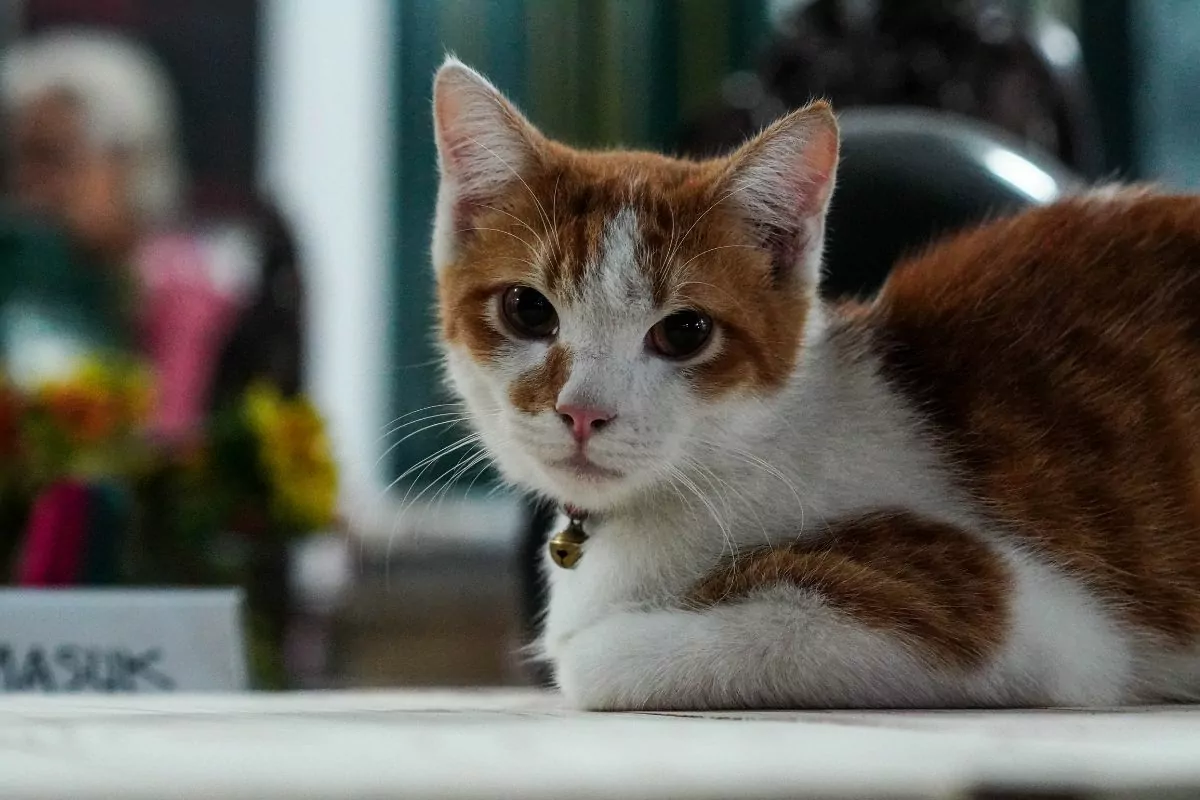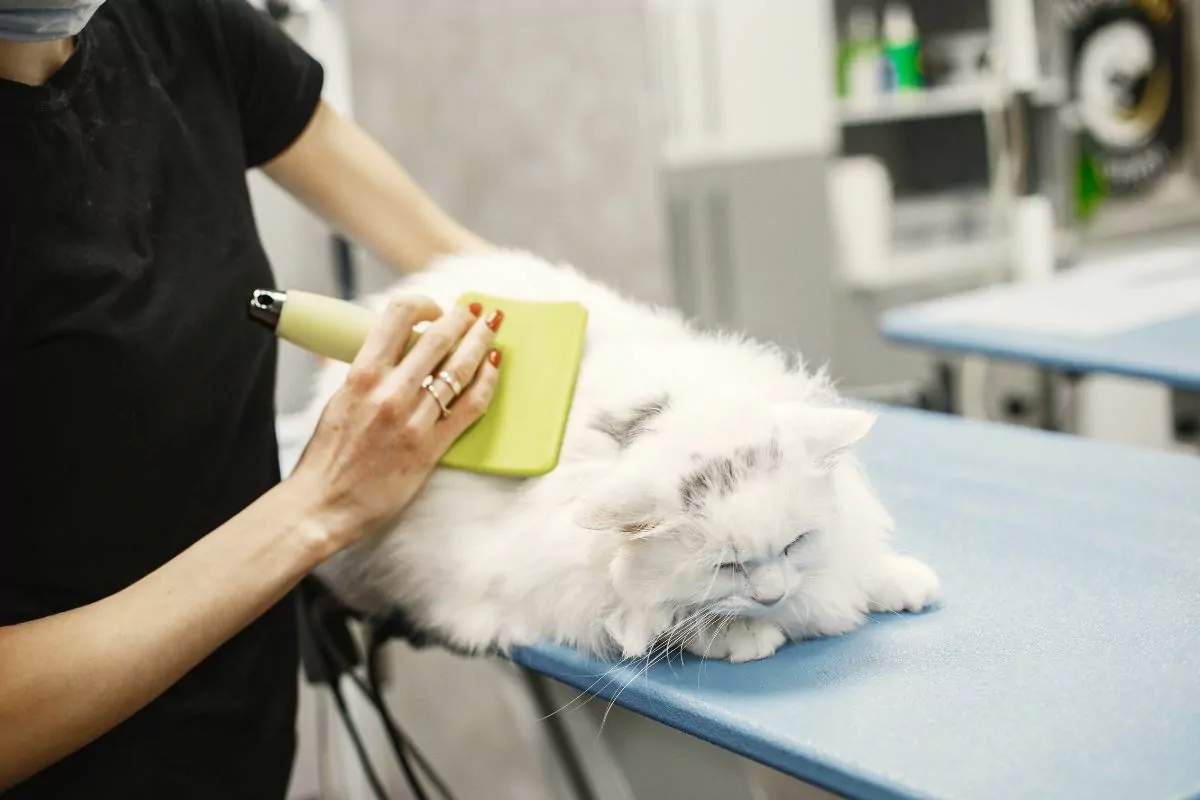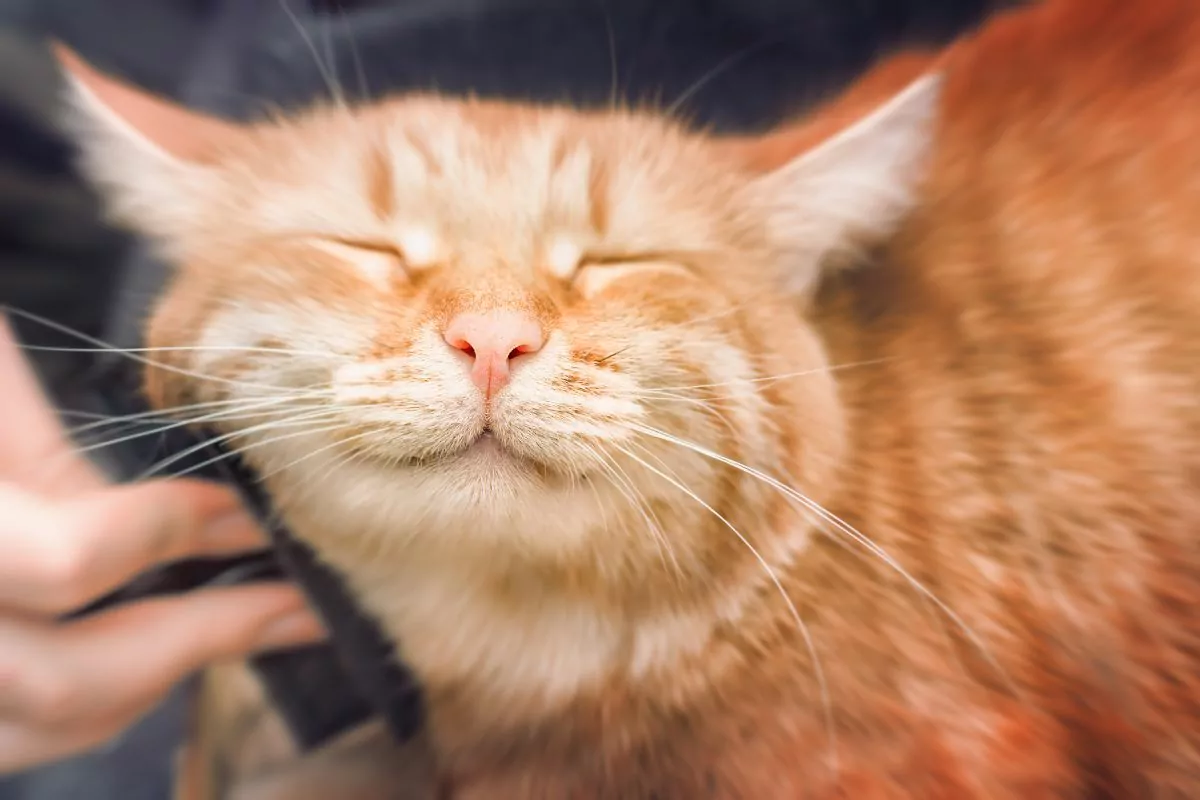Worldwide, the tendency to have cats as pets is increasing. And with it, all the doubts that arise from daily coexistence. Why does my cat have dandruff? It is one of the most common queries at the veterinarian’s office.
Like people, cats can also have dandruff. But, the presence of excessive dandruff is a symptom that something is wrong. Here we will explain all the conditions that can go with dandruff so that you can be alert and go to your trusted veterinarian if necessary.

Cats and Dandruff
Cat dander is a natural way of eliminating dead skin cells and tissue regeneration. They appear as small whitish flakes that stick to the cat’s fur.
There are several causes, which we will list below, that lead to an increase in the production of dandruff on the skin of cats. Identifying the possible causes of excess flakes on the cat’s skin is vital because the cat dandruff treatment followed will depend on it.
Why Does My Cat Have Dandruff?
Why does my cat suddenly have dandruff? Some dandruff cats’ causes are:
Obesity
An obese cat is also less flexible, making daily grooming more difficult. In those areas where an obese feline does not reach, dead skin usually accumulates; for example, on the back of its back.
Hydration
Correct internal hydration is very important for our cat’s health, but we must also consider the importance of good external hydration. Environments with very low humidity can favor cat flakey skin and predispose to dandruff.
Pathologies
These cause chronic pain in your cat and prevent them from carrying out their grooming ritual. An example of this is arthritis and osteoarthritis, especially in older cats.
Poor Quality Food
Your cat’s diet can also cause dandruff if it lacks certain nutrients essential for the healthy functioning of its skin. The skin cell renewal uses up to 30% of your cat’s daily protein intake, so any cat food should include high-quality and digestible proteins.
The essential fatty acids omega 3 and omega 6 contribute to the skin’s health; since your cat’s body cannot synthesize them, they should be part of its regular diet. Certain vitamins, such as A, also contribute to skin health, regulating cell growth and skin oil production.
Stress
Felines susceptible to stress soon show physical symptoms; one of the most common is skin problems. One altered behavior is excessive grooming, which leads to irritation and inflammation of the skin with consequent dandruff production.
Accumulation of Undercoat
Cats can have two types of coat, an outer coat with long, visible hairs and an undercoat with short, softer hairs attached to the skin. If you rarely brush, it can accumulate dirt, dead cells, parasites, and loose hairs.
Skin Allergies
Flea, food, or environmental allergies are the most common. A common dermatological symptom of these three types of allergy is dandruff.
Underlying Diseases
Sometimes, your cat may have other health problems that make it challenging to self-bathe, such as kidney disease, diabetes, or pancreatitis.
Hormonal Conditions
In particular, hyperthyroidism.
Autoimmune Skin Diseases
For example, pemphigus.
Cancer
Such as cutaneous lymphoma.
Skin Infections
Fungal infections (ringworm) cause dandruff in the cat. Hairless circular areas, skin irritation, and itching go with it. It is contagious to humans.
External Parasites
Fleas, lice, ticks, or mites cause itching, irritation, and dandruff. The presence of the Cheyletiella mite causes “walking dandruff.” Although it looks like dandruff, tiny parasites feed on the animal’s skin. It is very contagious and should also get treated.

Cat Fleas or Dandruff?
You may not know if those little white “spots” your feline has are cat flea eggs or dandruff. Although they look very similar and may make you doubt, it is possible to distinguish one from the other through close observation.
Both are white, translucent, and less than a millimeter in length. Yet, dandruff is thin, light, and has an irregular shape. Another peculiarity of dander is that it sticks to the pet’s coat and is difficult to remove.
Flea eggs have a uniform oval shape with round ends. The eggs are much thicker than dander and more slippery. They do not stick to the cat’s hair and soon fall off the animal.
How to Get Rid of Cat Dandruff
The treatment to end cat dandruff will depend on what is causing it. But you can take a very simple step at home to start helping your feline; brush them! Daily brushing helps to reactivate the microcirculation of the skin and its regeneration. This action also removes excess hair, dander stuck to them, allows you to see the presence of external parasites, and eliminates knots and dirt.
Change some of your cat’s habits and care to improve dandruff. For example, feed your cat a complete and balanced food. Ensure that its diet covers the needs of fatty acids, omega 3 and 6, leaves it satiated, and contains the necessary fiber to prevent weight gain.
Do not rule out supplementing the diet with fatty acid pipettes that you can apply to your cat’s skin. These supplements moisturize the skin and prevent water loss.
Play with your cat so that it gets regular exercise and does not gain weight.
Humidifiers can help to overcome environmental factors while increasing the number of water bowls in the house or changing the water more often can encourage it to drink more.
And last but not least, protect them from fleas and ticks.
When to Call the Vet
In principle, if your cat has dandruff is not a severe problem nor a reason to worry. Still, if your cat has any of the following symptoms besides dandruff, it may have a much more severe problem and need veterinary help.
- When itching, constant scratching, excessive licking, or intense rubbing against objects.
- Weakness, apathy
- External parasites (ticks, fleas, walking dandruff)
- Skin lesions, dermatitis, alopecia, or hairless round lesions
- Difficulty jumping as before, claudication, or joint stiffness
- Hirsute (greasy) coat
- Anorexia
- Little or no grooming
- Vomiting
- Changes in the way your cat uses the litter box (urinating or defecating outside the box)
- Changes in the amount of water intake, either decreasing or increasing

Final Reflections
Most cases of dandruff in cats are mild. But, it guides us to know if there is something to correct or improve in the health or environment of our friend. That is why knowing the causes of dandruff in cats is very useful in providing the best possible welfare to our pets.
You must visit your veterinarian to apply the appropriate treatment if there is other symptomatology besides excess dander.
As we can see, attention to small detail makes a big difference!
